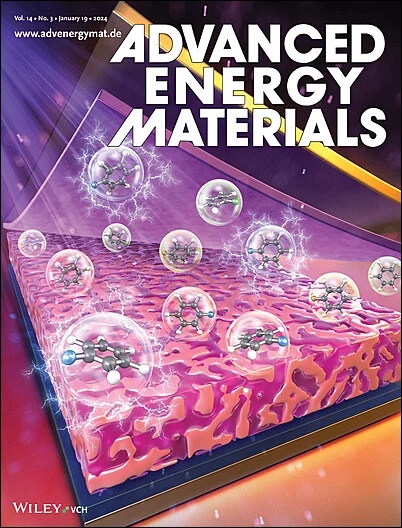Sub‐Single‐Crystal and Grain‐Boundary Bonding Strategy for Superior Battery Stability
IF 26
1区 材料科学
Q1 CHEMISTRY, PHYSICAL
引用次数: 0
Abstract
Ultrahigh‐nickel cathodes have become a promising option for high‐performance lithium‐ion batteries (LIBs). However, traditional ultrahigh‐nickel secondary particles often crack at the interfaces between primary grains, causing significant surface side reactions. On the other hand, single‐crystalline particles face issues like long lithium‐ion diffusion paths and surface reconstructions. To address these challenges, this study introduces a sub‐single‐crystal structural strategy designed to shorten lithium‐ion diffusion paths within the particles and uses a grain‐boundary bonding technique to reduce the risk of secondary microsphere fracturing due to uneven mechanical stress. Specifically, 1 µm LiNi亚单晶和晶界键合策略提高电池稳定性
超高镍阴极已成为高性能锂离子电池(LIBs)的一个有前途的选择。然而,传统的超高镍二次粒子经常在初生晶粒之间的界面处破裂,引起明显的表面副反应。另一方面,单晶粒子面临着长锂离子扩散路径和表面重构等问题。为了应对这些挑战,本研究引入了一种亚单晶结构策略,旨在缩短锂离子在颗粒内的扩散路径,并使用晶界键合技术来降低由于机械应力不均匀而导致微球二次破裂的风险。具体来说,1µm LiNi0.93Mn0.07O2单晶颗粒与Li3BO3结合形成二级颗粒。这些更小的单晶颗粒不仅减少了扩散距离,而且改善了晶界处的Li+输运通道。结合层有效地限制了电解质与电极的接触,防止了有害的晶粒相变,提高了电极材料的循环稳定性。在1℃下石墨阳极的全电池测试中,室温下800次循环后的容量保持率接近90%,60℃下800次循环后的容量保持率约为82%。这些结果表明,结构设计策略大大提高了结构的稳定性。该研究为超高镍阴极提供了解决方案,为推进其实际应用提供了强大的潜力。
本文章由计算机程序翻译,如有差异,请以英文原文为准。
求助全文
约1分钟内获得全文
求助全文
来源期刊

Advanced Energy Materials
CHEMISTRY, PHYSICAL-ENERGY & FUELS
CiteScore
41.90
自引率
4.00%
发文量
889
审稿时长
1.4 months
期刊介绍:
Established in 2011, Advanced Energy Materials is an international, interdisciplinary, English-language journal that focuses on materials used in energy harvesting, conversion, and storage. It is regarded as a top-quality journal alongside Advanced Materials, Advanced Functional Materials, and Small.
With a 2022 Impact Factor of 27.8, Advanced Energy Materials is considered a prime source for the best energy-related research. The journal covers a wide range of topics in energy-related research, including organic and inorganic photovoltaics, batteries and supercapacitors, fuel cells, hydrogen generation and storage, thermoelectrics, water splitting and photocatalysis, solar fuels and thermosolar power, magnetocalorics, and piezoelectronics.
The readership of Advanced Energy Materials includes materials scientists, chemists, physicists, and engineers in both academia and industry. The journal is indexed in various databases and collections, such as Advanced Technologies & Aerospace Database, FIZ Karlsruhe, INSPEC (IET), Science Citation Index Expanded, Technology Collection, and Web of Science, among others.
 求助内容:
求助内容: 应助结果提醒方式:
应助结果提醒方式:


